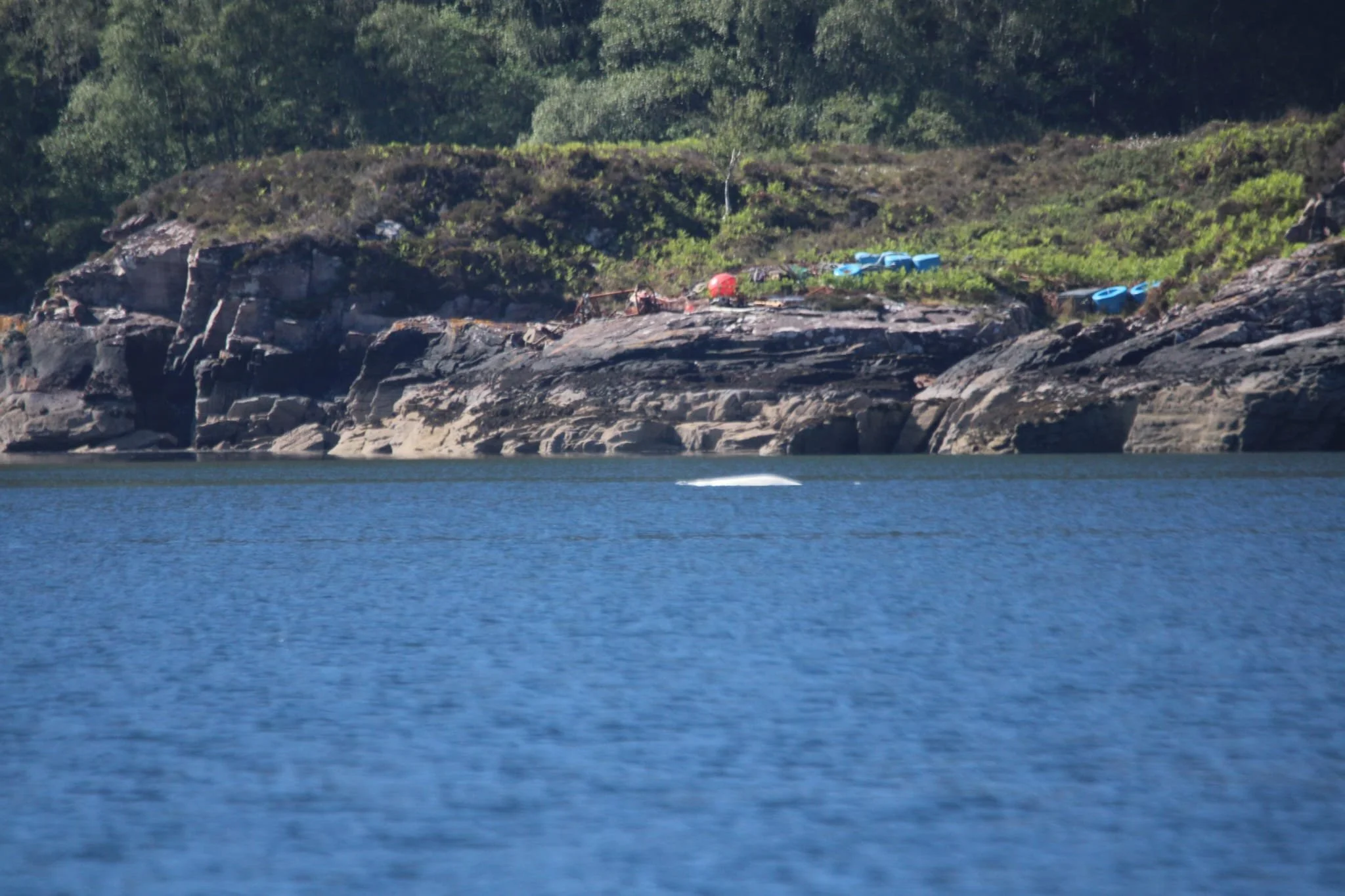An Action Packed Spring: Whale Track Summary
©Karen Munro
This spring has been hopping, with an action packed few months of sightings across Scotland.
Thanks to the dedication of 438 reporters, made up of boat operators and individual watchers, we have received:
· 321 excursions
· 132 land-based surveys
· 1543 casual reports
· 200 photographs
Resulting in over 2260 sightings of over 10,000 animals from 14 species.
*This data has not been analysed or corrected for effort.
The last few months have seen a few unusual sightings being reported, reminding us to always check the ID of the species, as sometimes it could be something quite unexpected. Reporting all species, from the common wee harbour porpoise to the rarer and surprising sight of a beluga, every sighting helps us to better understand and monitor the trends and changes in our vitally important seas.
LOCH BROOM BELUGA
Speaking of belugas. It’s not often we receive reports of these pure white, bulbous headed, no finned whales in our waters. But this May, to the surprise of many, a beluga whale was spotted in Loch Broom, Ullapool. Reported to us by Noel Hawkins, photographs submitted confirmed the species.
Belugas live in high altitudes of the northern hemisphere in cold Arctic and sub-Arctic waters and are a highly social species, usually seen travelling in relatively large groups. However, there have been a handful of beluga whale sightings in the UK in recent years, most recently in Shetland in January last year. There was also one in the River Thames back in 2019.
Read more about the Loch Broom beluga sighting in Noel’s Whale Track Stories blog.
©Gordon Ball
RISSO’S DOLPHINS
This April we had some fantastic sightings of Risso’s dolphins reported into us with some stunning photographs, showing just how beautiful these unique looking dolphins are.
On 15 and 22 April, Karen Munro reported pods of 11 and 8 Risso’s dolphins from Thurso. Observing the pod of 11 on 15 April throughout the day between 9am and 4:30pm, Karen was able to capture these fantastic aerial images and this gorgeous close up of one breaching.
©Karen Munro
KILLER WHALES TAILS
Sightings of much-loved pair, John Coe and Aquarius have been scarce so far this year. The first confirmed sighting this year was back in February off Arisaig by North Coast Sea Tours. The next confirmed sighting was on 16 March when they were spotted in Gairloch by Alan and Fiona Sloan.
Come the 5 April, they were seen for the first time this year in Ireland, off Raithlin Island by the Kintyre Express. By the end of April, there was some confusion as to where the boys could be, with sightings of them coming in from Rum and Cape Clear, Ireland, a distance of c750 km just 48 hours apart. It’s unlikely these sightings were both of the boys, (although, did you know their top speed is 35mph!) but these reports highlight the importance of photos so we can get an ID to add to the Photo ID records.
The most recent confirmed sighting of Aquarius is from 19 June. Photographed by Penny Critchlow off Polin Beach, Ireland and reported to the Irish Whale and Dolphin Group, a tail fluke image helped to confirm the identity. Following this, a series of sightings of a solitary Aquarius has grown concern regarding the whereabouts of his long-term companion, John Coe. These killer whales are highly mobile and wide-ranging, often going unrecorded for extended periods. In 2020, John Coe was observed alone over a two-month period (end of June to end of August). Now, the situation appears reversed. While this is a worry, we hope that is just another temporary separation, and the pair will be seen together again very soon. If anyone does spot either Aquarius or John Coe, or have any other recent sightings of them, please report them to us via Whale Track or by email.
SURPRISE SPERM WHALES FOR MORAY WATCHERS
I can’t write this without including a couple of incredible sightings which came into us in June of an unexpected pod of sperm whales off the Moray coast. On the 19 June, 8 sperm whales were spotted off the Moray coast, viewed from Burghead. Reporter Porpoise comments that the animals were ‘slowly moving east. Blows directed forwards. Tail seen in side profile involving one whale. Spy hop seen involving one whale. Located pod just before 10:00 am.’ Subsequent reports came through from Gordie Bryce at midday identifying logging and spy hopping behaviours and at 5:30pm by Tilly Currah who captured these distant images.
Sperm whales are deep diving animals, so being seen near to the coast, does give cause for concern. However, this pod were last seen heading further north to deeper waters. A good end to an unexpected and rare sighting.
More photos and videos can be found on the Caithness and Moray Firth Cetacean Sightings Facebook Page.
Thank you to our wonderful Whale Track community for reporting your encounters and contributing to the understanding of species in our seas.
We can’t wait to see what the summer season brings!








